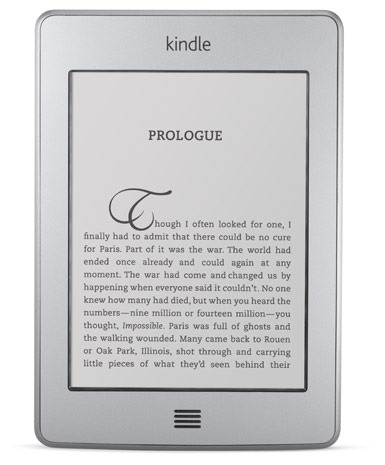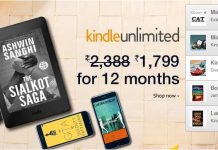 The emergence of search engine optimization (SEO) significantly changed the way that web content is created. Will the digitization of e-books, and the offering of free sample chapters, change the way that books are plotted and written? This is the question asked by Alan Jacobs in an article on The Atlantic. And he finds that in some ways it already is.
The emergence of search engine optimization (SEO) significantly changed the way that web content is created. Will the digitization of e-books, and the offering of free sample chapters, change the way that books are plotted and written? This is the question asked by Alan Jacobs in an article on The Atlantic. And he finds that in some ways it already is.
Jacobs points out that a number of authors are trying to plot their books so that a major cliffhanger occurs at the end of the 10% that Amazon provides in its sample chapters. He also notes that the way the Kindle keeps track of where people are in the book and where they stop reading could provide feedback for authors interested in updating and tweaking their books to “fix” the problems that make people stop.
It’s an interesting idea, to be sure. We’ve already seen a number of examples of narrative structure being influenced by the form in which stories have been written. For example, the serialized works of the 19th century often ended each chapter in cliffhangers to draw people back in from month to month. And a lot of writers will be willing to try anything that might look like it could sell them more books.
































Good points. Amazon’s big mistake is to have an arbitrary cutoff for their free samples. They should let the author or publisher specify that point, so it comes at a cliff-hanger rather than after a drab but necessary chapter. But then the #1 problem with Amazon for authors is that it gives them so little say in what Amazon does with their books. I’ve got a Tolkien book that really needs two blurbs: one for during the year when the main buyers are Tolkien fans and one for the Christmas season when the main buyers are friends and relatives of Tolkien fans. Why can’t Amazon give me and easy way to manage my books and flip between those two themes.
I suspect that the web in general is changing how people read and thus how books need to be written. The book I’m working on now will have close to sixty short chapters, each less than 2,000 words and each complete in itself to the extent that each deals with a single theme or central event. The book as a whole will still have a plot and a narrative flow.
I’m doing it that way, in part, because I suspect that web page reading has tilted readers toward reading in shorter bites much like those who read serialized 19th century novels.
If cliffhangers or exciting moments are only offered by the Amazon percentage, then I doubt anyone would read that far.
These days, the writer has to grab the reader’s interest in the first few paragraphs then lead him forward with interesting bits to the end of chapter one where the dire circumstances and goal of the main character are shown so he can’t stop reading.
Every page of text should offer him several reasons why he must keep reading, and the intensity of those mental, emotional, or physical cliffhangers must become greater with each new scene.
The only samples I’ve deleted (not gone on to buy the ebook) were badly written (stilted writing, no descriptive flow) or had a style which simply didn’t suit me.
I don’t see how you can reject a book on the basis of plot, when you’ve only read 10% of it.
If you want to see impeccable plotting, as well as superb use of language, read any of P.G. Wodehouse’s books. All of them were initially serialized in the Saturday Evening Post magazine, because the editor there paid Wodehouse more than the pittance offered by book publishers. Plus ça change…
Clytie, if you are commenting on my post, I’ll clarify. I’m talking about the goal of the main character, not the whole plot.
In Wodehouse, for example, early in the book, usually the first chapter or the first scene, Bertie or one of his equally feckless friends or relatives has a problem, and Bertie spends the book trying to resolve it. That’s his goal, and the plot is how he reaches or doesn’t reach it.
If you are interested in how an author lays the breadcrumbs that lead the reader forward through the story, I recommend my article on interlocking questions.
http://mbyerly.blogspot.com/search/label/interlocking%20questions
Certainly many might change the structure of their stories to increase sales, and, to a limited degree, this could even be advisable. However, great story structure withstands trends and social moods. Three acts will always be classic, and, I believe, in the final analysis, the strongest consistent read. We look instinctively for characters who enter a “new world” to claim the challenge, tackle the problem, embrace or reject the change, overcome or fail, and finally return “home” with that “magic elixir” that impacts the reader as fantastically as it does protagonist of the tale. Where pseudo/mini climaxes occur, we can and do adjust, but the bones–if they’re good bones–will endure the test of time.
Not at all. A story MUST include certain functions. Great insights about story structure and narrative at http://www.clickok.co.uk/index4.html